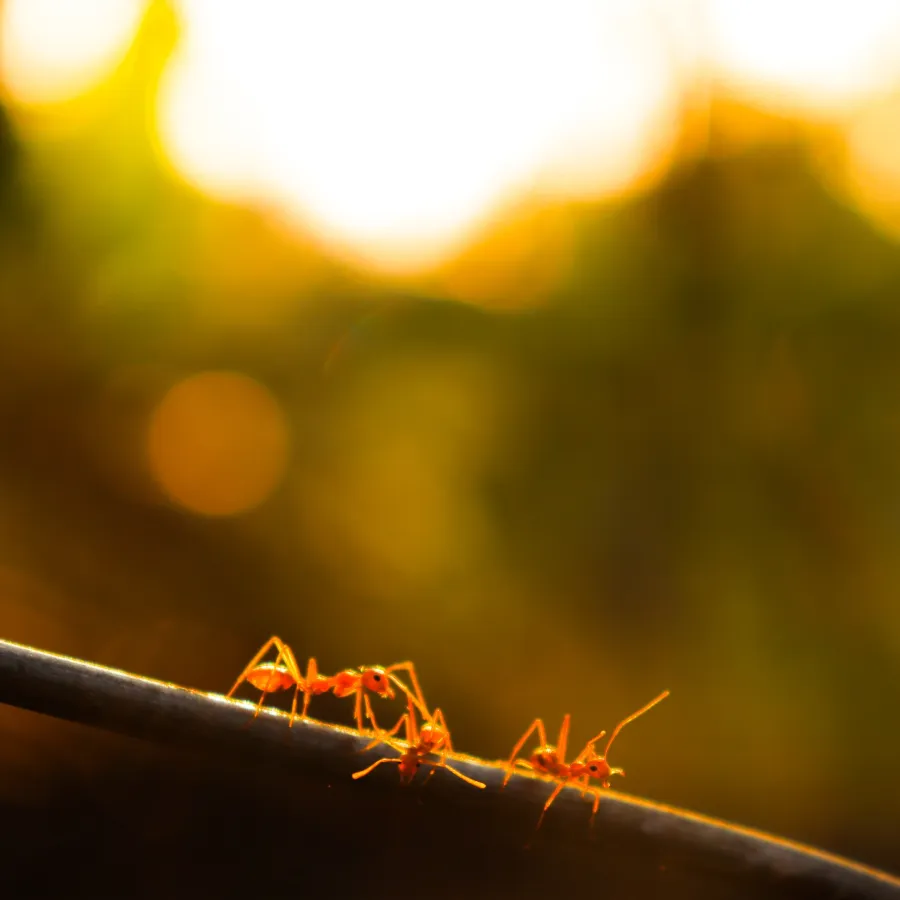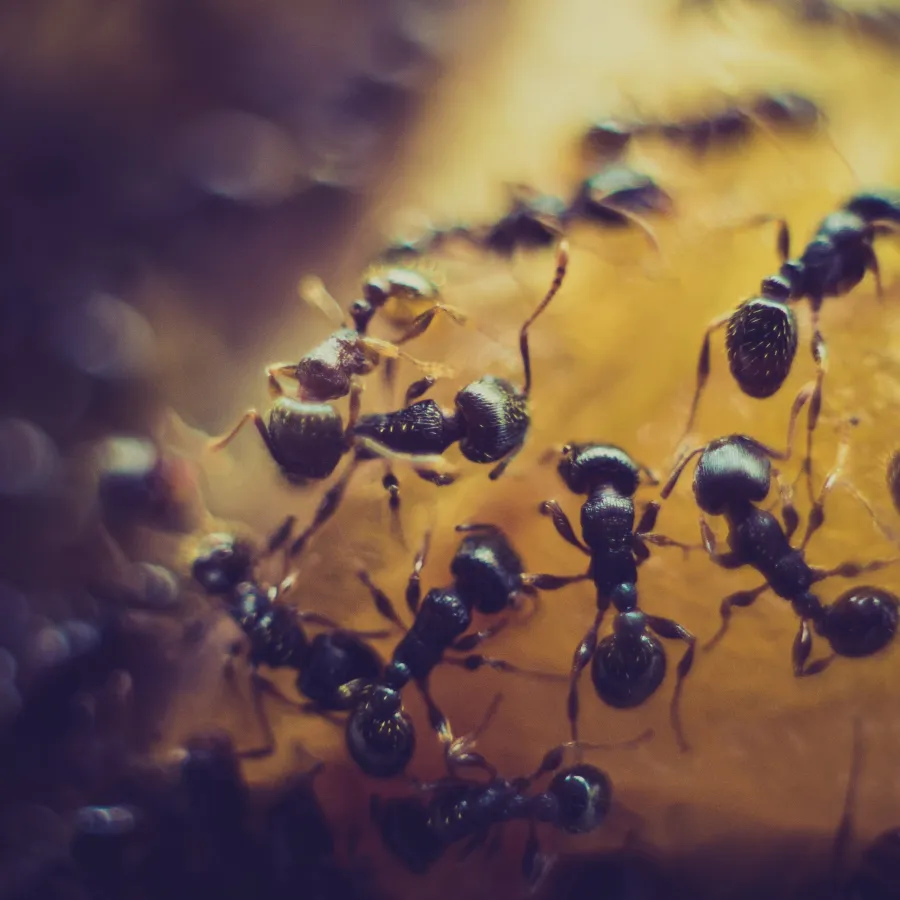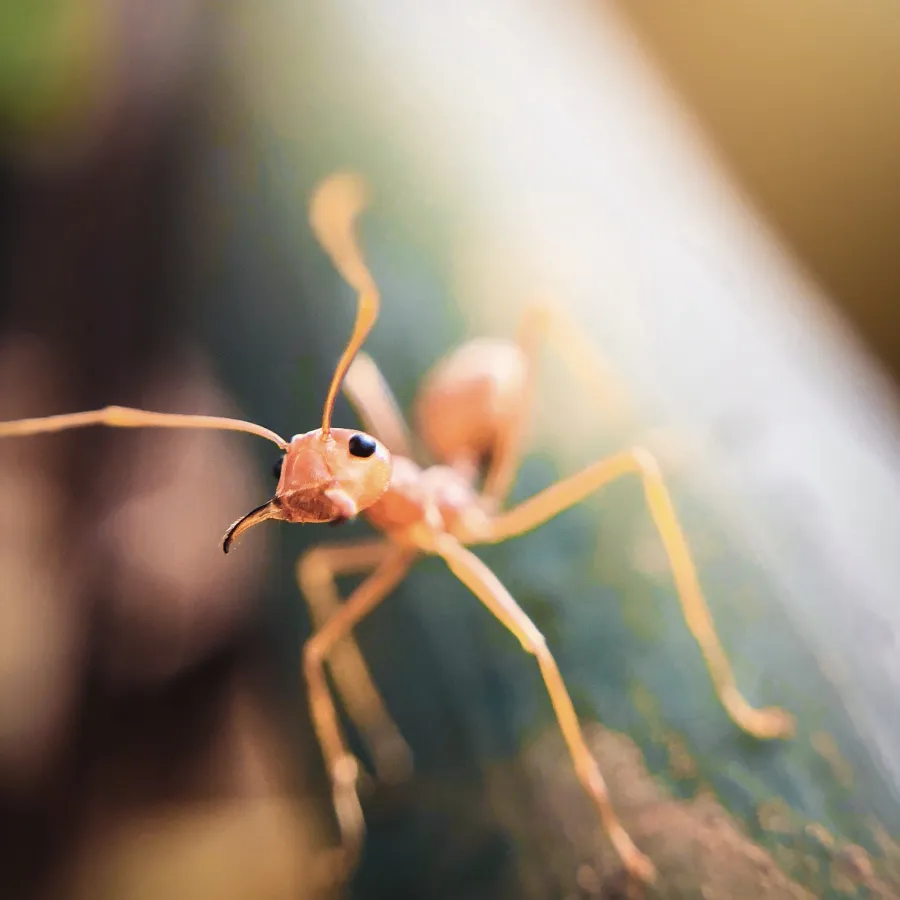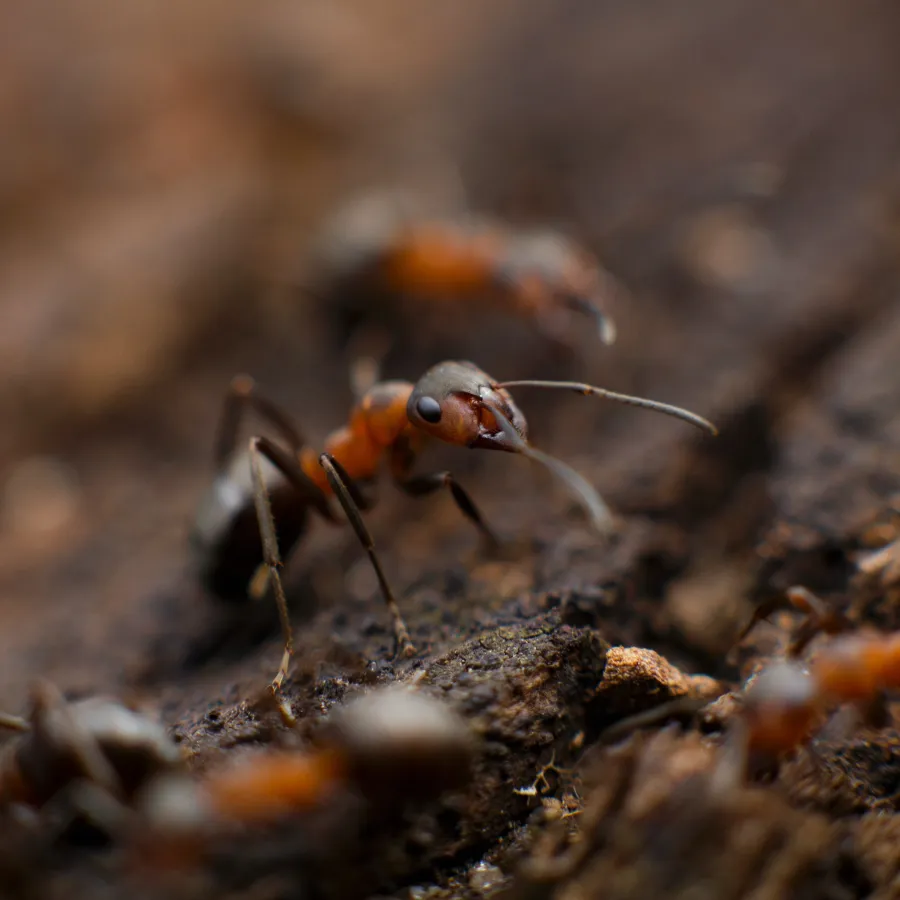
Ants
so many different kinds!
Ant identification 101
While all ants have the same basic body structure, there are significant differences in their habitats, behaviors and level of threat to you, your family and your home. First you need to know what kind of ant you are dealing with. With thousands, how do you know?
Here are some of the more common varieties found in the southeastern US with basic identification and behavior traits.
Argentine ants
Argentine ants are brown to light brown in color and workers are all 1/8" long (monomorphic) with a single pointed node and an uneven thorax.
Most live outdoors in a shallow nest in moist areas, under rocks, beneath plants, under debris, sidewalks, mulch and in trees with a colony population reaching hundreds of thousands.
Indoor infestation is very common during cold, dry and/or wet environments outdoors.
Once established, they are one of the most persistent and troublesome of all the house infesting ants.
Homeowners may have infestations year after year until all nests are found and eliminated.
Argentine ants prefer to feed on sweet honeydew, fruit juices and plant secretions, but will also feed on proteins such as meats and insects and will even feed on vulnerable animals.

Carpenter ants
There are two carpenter ant species in Georgia: the black carpenter and the Florida carpenter ant.
Black carpenter ants are dull black in color with yellowish hairs covering their abdomen.
Florida carpenter ants have a deep reddish colored head and thorax with a shiny black abdomen.
Both ants range in size from 3/8"-5/8" in length with multiple size workers in the colony.
The Florida carpenter ant is more common in southern and southeastern Georgia, while the black carpenter is more common in central and northern Georgia.
Large colonies can grow to 8,000 - 10,000 ants in size and usually mature in approximately 3-6 years.
They mainly leave the nest at night to forage for food and can forage 100 yards or so from the colony with a number of satellite colonies.
Diet consists of foods that contain fats and/or sugars.
Colonies will most often be outside the structure but can be inside if conditions are conducive for them.
The key to elimination is finding all nests, including satellite nests, and eliminating them with insecticides.

Pharaoh ants
Pharaoh ant workers body color ranges from yellowish/light brown to red with an almost black abdomen with two nodes on the petiole.
They also have a 12 segmented antennae with 3-segmented club and a stinger that is present but rarely used.
The thorax is uneven when viewed from the side with no spines.
They grow from egg to adult in about 45 days.
Pharaoh ants feed on both living and dead insects on the exterior of a structure.
Once pharaoh ants have taken up residence on the interior of a structure, they feed on sweets, fats and proteins.
Colonies are very mobile and have multiple queens in the colony that will bud/separate from the colony if disturbed or if the colony becomes too large.
The size of the colony can vary from a few dozen to several hundred thousand ants in size - nesting in walls, cabinet voids, behind baseboards, insulation and even folds of clothing left undisturbed in dark places; they can nest just about anywhere in a structure.
Once an established interior colony has been treated with a repellant insecticide, elimination could take months if not a year.
Pharaoh ants are the most difficult ants to eliminate once established in a structure due to their nesting habits.
Note: Never treat the inside of a structure with a repellent insecticide for ants until they have been positively identified.

Tawny crazy ant
The Tawny Crazy ant is an invasive species from South America (Southern Brazil & Northern Argentina) that was first discovered in the U.S. in 2002 by a pest control operator in a suburb of Houston, Texas. More recently (and closer to home!) the Tawny Crazy Ant was discovered in Albany, Georgia, in 2013. They are now well established in parts of Texas, Mississippi, Louisiana, Alabama, Florida and Georgia (especially southern and coastal areas). Transportation plays a large factor in relocating these pests into new areas. A TCA colony can reach into many millions in a single area but are not considered a single house/lot pest. The colonies are so large and dense that they are actually displacing and/or eliminating other ant species where they are established, especially fire ants. It's noted that they can even kill and overtake ground nesting animals, a pretty big concern for the poultry and livestock industry. They are omnivorous so diet varies.
This ant somewhat resembles the Argentine Ant to an untrained eye.
The worker is 1/8-inch-long, reddish-brown in color, very hairy with 12 segmented antennae and one node, with a dense circle of hairs around the end of the abdomen (gaster).
Another identifying characteristic is their large population and their rapid, erratic and random foraging (hence the name "crazy" ant).
The TCA does not have a stinger, but worker ants can excrete formic acid from their abdomen for defense or attack which can irritate your skin and eyes.
They are capable of biting, but the bite only causes a minute pain that quickly goes away.
The concern for as a household pest is the vast number of ants that can infest the home, i.e. infesting electrical equipment and boxes causing them to short circuit along with clogging switches that can result in thousands of dollars in repairs.
Outside the home, colonies are found nesting underneath any item that retains moisture such as wooden timbers, rotting wood, leaf litter, under mulch, potted plants, piles of debris, rocks, trash, sidewalks, etc.
Each colony has numerous queens that all share responsibilities, which allows the colony to achieve a very large population.
TCAs spread through budding as one or more queens move from the colony, usually aided by people.
Regardless of the type of ant, a professional pest control company can eliminate the colony and protect your home and family.

